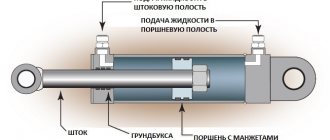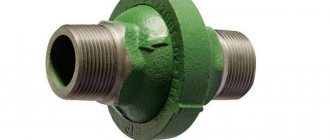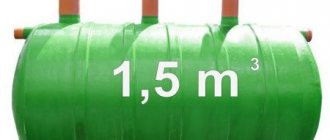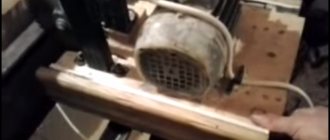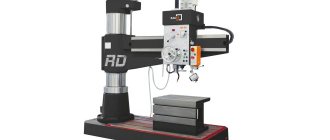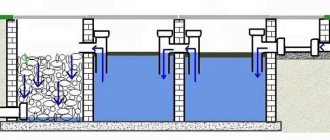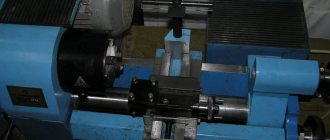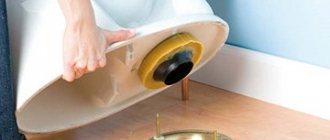The first weather vanes were used to determine the direction of the wind on ships. Later, this device began to be installed on the roofs of buildings. With the development of technology, weather vanes as a device indicating the direction of the wind were replaced by more accurate meteorological instruments.
Currently, they are used more as a decorative element of the roof, although they perform certain functions. Modern types of weather vanes can have different shapes and sizes. In this article we will talk about the main features of these interesting elements.
Several historical facts about the weather vane
The first mention of weather vanes is associated with the history of Ancient Greece and dates back to 48 BC. e. This example of a meteorological device was installed on top of the Tower of the Winds, which is the most ancient synoptic monument. The ancient weather vane was made in the form of a figure of the Greek god Triton, with a bust of a man and the tail of a fish.
The Tower of the Winds, whose height is 12 meters with a diameter of about 8 meters, was erected by the famous astronomer Andronikos of Cyrrhus. In its upper part there is an allegorical image of the eight winds: the south - Not, the north-west - Sciron, the east - Evra, the north - Boreas, the south-west - Lips, the south-east - Apeliot, the west - Zephyr and the north-east - Kekia.
Unfortunately, the most ancient weather vane has not survived to this day. Experts estimate it was between 4 and 8 feet long. Its function was not only to determine the direction of the wind, it also indicated which god controlled the weather conditions at a certain time. In Ancient Greece, weather vanes depicting gods could only be installed on the houses of noble people.
Starting from the 9th century, the most popular among the Vikings was a weather vane in the shape of a cat. Such models were made of gilded bronze. To decorate weather vanes, the Vikings used various figures of animals and mythological creatures from Scandinavian legends. They were installed on the bow of drakkars (warships) or on a special pole located on the deck of the ship, so that the jewelry work of the master could be seen.
In addition, weather vanes among the Scandinavian peoples served as decoration for temples. Today these original products of various types can be found in Norway and Sweden. In Europe and America, the image of a rooster was often used to decorate a weather vane. The popularity of such models is explained quite simply. In the 9th century, the Pope issued a decree according to which all churches had to be decorated with the image of a rooster, which was a symbol of the Apostle Peter, and therefore the entire church. The use of such a symbol is associated with the words of Jesus Christ spoken to the Apostle after the Last Supper: “Before the rooster crows, you will deny Me three times.” According to another version, the image of a rooster should remind believers that “the church of God watches over the souls of believers.” One of the tapestries of Bayeux Cathedral depicts a scene of such a weather vane being erected on the spire of Westminster Abbey. This work was dedicated to the preparation of the Norman conquest of England.
During the Middle Ages, different types of weather vanes began to be installed on the roof of a house not only to determine where the wind was blowing, but also to decorate the roof. They served as a kind of coat of arms. Enterprises engaged in the industrial production of such products appeared in the Victorian era. Subsequently, the demand for any types of weather vanes dropped noticeably. The revival of consumer interest in simple meteorological equipment occurred already in the 70s of the last century. Our ancestors used different names for weather vanes, which are based on the principle of operation of a rotating wind indicator - girouette, nose, chameleon, vertun, saddlebag, anemone, etc.
A weather vane can serve as a lightning rod for detached houses. Its design includes a wire, which at one end is connected to a weather vane figure, and its other end is buried approximately 1.5 meters into the ground. Such a device can protect electrical appliances and people’s lives from lightning strikes.
Currently, a beautiful weather vane on the roof serves as a demonstration of the wealth in the house and the good taste of its owner. Modern types of these devices can transform the roof structure and turn it into a work of architectural art.
Weather vane design and choice of installation location
The word "weathervane" comes from the Dutch Vleugel. The most primitive design of a weather vane is a spear or pike stuck into the ground with a flag at the tip.
The sailors had a flag attached to the mast of the ship. The flag flutters in the wind, indicating where the current is blowing from. Over time, weather vanes evolved into complex metal structures. Weathervanes with heraldic symbols decorated the towers of fortresses and castles of feudal lords.
By the symbol on the weather vane, people recognized which class or guild of craftsmen the owner of the house belonged to.
Since the Middle Ages, a special meaning has been invested in the design on the weather vane. People believed that a weather vane protected against the evil eye.
Today, weather vanes decorate private cottages and say a lot about the character of the homeowner.
Despite centuries of technological development, the design of the weather vane has reached us practically unchanged. The weather vane consists of:
- A flag - a weather vane - is a decorative element of a weather vane. Usually this is a figure on an arrow with a counterweight.
- Rotary axis.
- Wind roses are rigidly fixed arrows - north, south, west, east, which are oriented to the cardinal points.
A weather vane works like this: the wind acts on the weather vane. It rotates and takes the optimal position with the least resistance to air flow.
The needle on a weather vane, a properly adjusted weather vane, shows which way the wind is blowing.
To install the weather vane, choose the highest place on the house. It is advisable that tall trees do not grow nearby. Optimal places for installing a weather vane:
- Tower, for example, bay window.
- Roof ridge.
- Chimney.
Now let’s move on to the design of weather vanes, so that after looking at the examples, you can choose the best option for yourself.
Types of weather vanes by purpose
There are several types of weather vanes according to their functional purpose:
- Meteorological devices are high-precision instruments that are qualitatively balanced. Such devices are called anemorummeters and are installed at meteorological stations.
- Vilde wind vanes are designed to measure wind force. A special feature of their design is the presence of a vertical metal plate that swings from side to side. The deviation of such a plate from the vertical position demonstrates the intensity with which the wind flows move. Sometimes, instead of such a plate, a propeller is used, which can also scare away birds.
- Decorative weather vanes are not precise. They serve to decorate the roof. As a rule, such a weather vane is made in the form of a stylized animal or symbol, the figure of which indicates the direction of the wind.
- Chimney weather vanes protect against air blowing into the chimney and ensure unimpeded exit of smoke from the chimney even during strong winds.
Most often, all types of weather vane designs are combined in one device, but it is worth considering chimney models separately.
What is a weather vane
If you believe the all-knowing Wikipedia, “A weather vane is a meteorological instrument for measuring the direction (sometimes speed) of the wind.”
For quite a long time the weather vane was used for its intended purpose. In particular, on ships, it was used to determine the direction of the wind and its strength. Actually, sailors were the first to install it on their homes.
Over time, land people fell in love with this roofing accessory and began to decorate their homes with it.
The most popular were weather vanes depicting a rooster. It was believed that when installed on the roof it would scare away evil spirits and thieves, and also protect against fires.
Wealthy townspeople ordered weathervanes in the form of family coats of arms. Craftsmen placed a weather vane on the roof depicting an object of activity (a shoemaker - an image of a shoe, a baker - an image of a bun, etc.).
Over time, weather vanes became a kind of address signs indicating the location of a particular person.
In the 2nd century, the practical significance of the weather vane was lost. It is a nice decoration for the roof.
The principle of operation of a chimney weather vane
There are so-called chimney weather vanes, and their importance for the normal operation of chimneys is very great. You can choose designs that help drain rainwater and protect pipes from birds and even small animals. It is worth noting that the smell from a burnt nest that a bird made in the summer will be simply unbearable. Weather vanes that are designed to protect chimneys are called weather vanes, chimney caps or chimney caps.
- The protective role of the weather vane
A smoker, or weather vane, is used to cover an open chimney pipe. This device performs protective and decorative functions. Chimneys are installed above the pipe and visually complete it. The problem with this device is that the weather vane bearings need to be periodically maintained and lubricated. In winter, ice forms on the surface of the chimney due to the steam contained in the smoke, which needs to be knocked off.
The main task of a chimney weather vane is to prevent backdraft. It is worth noting that conventional caps that are installed on chimneys are just the opposite.
Evgeniy Filimonov
Ask a Question
may contribute to backdraft if strong winds blow.
As noted above, the design of a weather vane includes an axis, a figure and a cross indicating the cardinal directions, which distinguishes it from a simple cap. This device gives the chimney pipes an aesthetic, finished look.
Why is it worth installing this type of weather vane on the chimney? This decorative element provides effective wind protection, which is especially important for the northern regions of the Russian Federation. Its design helps deflect the air flow and prevent it from being blown into the pipe. Chimney weather vanes are equipped with a special damper that closes the chimney from the wind. This element allows smoke to exit the chimney calmly from the leeward side. Thus, a draft is formed that removes combustion products.
The weather vane on the chimney prevents raindrops and snow from falling directly into the channel. To prevent the resulting condensate from penetrating inside the pipe, special drips are installed on the wind vane. Without such a design, the upper part of the chimney will get wet and collapse. In winter, condensation will enter microcracks in the chimney. After freezing, water droplets in the pores of building materials will expand. Constant expansion and contraction due to freezing/thawing of moisture significantly accelerates the destruction of the chimney.
- Weather vane deflector
Another type of chimney weather vane is called a deflector. The term "deflector" refers to its ability to deflect air currents. The design of such weather vanes, as a rule, includes two cylinders, above which cone-shaped umbrellas are fixed.
The principle of operation of such a device: the air flow, resting against the wall of the upper glass, bends around it and is directed upward. As a result, the speed of air movement inside the pipe increases, which leads to increased draft in the chimney. Air flows moved by the wind are diverted by the upper cone-shaped cap and do not enter the pipe.
A correctly selected weather vane-deflector model will not only prevent the occurrence of reverse draft, but also enhance the removal of combustion products. The fact is that the weather vane, turning with a cone towards the air flow, creates turbulence. It should be taken into account that in winter ice may appear on its surface, blocking the operation of the device, so you need to get rid of it periodically.
When installing a weather vane deflector on a chimney, you should use only bearings that are protected from moisture. During operation of the device, it is necessary to lubricate such bearings once a year. Modern models of weather vane deflectors usually have the shape of a crown or a crown that adorns the top of the pipe.
How to install a chimney sign
If it is necessary to install a wind indicator on the chimney, select its highest point - a protective cap. Metal brackets are installed on it using a drill, and the main device of the weather vane is attached to them. In such an installation, the housing will rotate simultaneously with the deflectors - devices that prevent the reverse flow of air into the chimney pipe.
What materials are weather vanes made from?
Currently, various types of weather vanes are made from sheet steel or copper. Metal structures are able to maintain an attractive appearance for a long time, even despite difficult weather conditions. Forged weather vanes look especially respectable.
You can also find wooden weather vanes on sale, but such devices are very susceptible to ultraviolet rays, moisture and temperature changes. To extend the service life of wooden structures, it is necessary to periodically coat them with special protective compounds and varnish.
Another material option for making weather vanes is plastic. But this type of device is not durable.
Simple models of weather vanes can be made independently from plastic bottles or CDs. This design can be installed on a country house, greenhouse or shed, but it would be inappropriate on a respectable cottage.
How does a weather vane work?
In order for the structure to subtly respond to changes in air flow direction, it must consist of the following parts:
- bases - fastenings for fixing on the roof ridge or on the spire;
- a bearing that ensures rotation of the axis;
- the axis itself is in the shape of a rod;
- an index plate mounted on an axis;
- counterweight equalizing the plate.
Vane design device
Optimal weather vane size
To choose the optimal appearance of a weather vane, you need to be able to view its figure from a great distance.
First you need to determine the location where you plan to install such a structure:
- Bathhouse, garage, shed or gazebo
The average height of such buildings does not exceed 3.5 meters. When installing a weather vane on a bathhouse, barn or gazebo, it will serve as a bright landmark, but only on the site. The length of the silhouette of the figure of such a device should be from 40 to 60 cm. With these dimensions, the weather vane will look proportionate against the background of the garden building.
- Cottage
If the weather vane is planned to be installed on a one-story residential building, then its length should be from 60 to 80 cm. With such dimensions, the structure will be clearly visible not only from the site, but also from the street.
- A house with two or three floors
A weather vane for a cottage with 2 or more floors should be chosen with a silhouette length of at least 80 cm.
Recommendations for making a weather vane
Most home craftsmen can make a weather vane with their own hands. Tools you will need:
- electric jigsaw;
- drill for fine work;
- Bulgarian;
- set of grinding wheels and bench tools.
Tips for making a homemade weather vane:
- Simplify the task of making a weather vane - order laser cutting of metal according to the template of your choice. This will speed up the work and improve the quality of the weather vane, especially if a design with a large number of shaped details is chosen.
- Take your time to cut a weather vane from a sheet of metal! Make a 1:1 scale model from a piece of thick cardboard, a thin sheet of plywood or plastic. Get on the roof. Attach the weather vane to a temporary support. Go downstairs. Look what it looks like from the outside.
It’s one thing to have a weather vane in a picture or from a neighbor, and quite another thing to have a weather vane on the roof of your house.
- Standard weather vane sizes for a medium-sized house are shown in the figure below.
These dimensions are not a dogma! Consider each case individually. If the house is large, 2-3 floors, then increase the length of the weather vane to 1 m.
- When working at height, do not forget about the safety and reliability of attaching the weather vane to the roof.
- The optimal thickness of a metal sheet for making a weather vane is 2 mm.
The topic on the portal tells how to make an excellent weather vane with your own hands.
We advise do-it-yourselfers, artisans and those who like to spend time in the workshop:
- Do you want to know how to choose a welding machine and learn how to weld metal with an inverter? Answers in the article - Welding work and secrets of craftsmanship from FORUMHOUSE.
- Are you wondering why you should buy an expensive circular saw or a circular saw for metal if you have a powerful grinder? And how to cut sheet metal with a jigsaw? All answers in the article - Helpers in metal work for the home workshop.
- Why buy an expensive stand for an angle grinder if there are step-by-step instructions for making it from FORUMHOUSE? Find out how to make a universal angle grinder with a rotating mechanism.
- Are you passionate about blacksmithing, but are finances singing romances? After all, you will have to buy an anvil, a set of tools and a blacksmith's forge. No problem! Save your family budget and make your own mini-forge for pennies.
- Correct forging only hot? We will refute this statement in an article that reveals all the secrets of cold forging for beginners.
With a few metal decorative elements, a welding machine and a vice on hand, you can make a real masterpiece for the garden! In the video there is a master class on making forged grapevines.
Vane height
There are no established standards for choosing the dimensions of a weather vane. This characteristic depends on the height of the building on the roof of which the device will be installed. It must be taken into account that correct weather vane readings can be ensured only in those places where there are no wind turbulences, that is, nothing impedes its flow.
In other words, if the structure will be placed on the ridge of a building next to which there are taller buildings, then the spire for the weather vane should have a height that allows it to be taller than the buildings located nearby. Only under this condition will the weather vane display accurate readings.
If a house with a weather vane on the roof is the tallest building, then the “vertun” design may have a short spire, and therefore not very high. This type of device is best placed at the very edge of the roof ridge. In this case, the weather vane will be clearly visible when leaving the house.
There are no height restrictions for such structures, but average values for the dimensions of the weather vane can be given. The base installed on the roof is usually from 5 to 7 mm, the rod size is 45 cm. The total height of the structure will be about 46 cm, and if there is a weather vane - 50 cm. You can also find higher types of such devices - 60 and even 80 cm .
History and reality
By origin, a weather vane is a meteorological instrument. Now it carries, for the most part, a decorative load. Why do you need a weather vane on the roof and what functions can this device perform? We will try to answer these questions in this article.
Types by purpose:
- Chimney
. Performs tasks of regulating draft, removing smoke and protecting the chimney from blowing out. This device should not be confused with a regular protective cap. Such a weather vane is a rather complex structure, consisting of a fastening, a rotating element on bearings, and a specially designed cap, which, when rotated, increases traction. Such structures have a damper. It covers the chimney from the air flow, which is why the smoke always flies out from the leeward side. This device is called a deflector. It consists of two cylindrical pipes and cone umbrellas attached above them. When moving, the air goes around the cylinders, goes in a spiral, thereby creating a kind of funnel, which increases the draft in the furnace. For home fireplaces, such a deflector is a necessary thing. Of course, manufacturing and installation should be carried out by professionals, because smoke should not take away the heat from the house. The deflector must function correctly and reliably. It is made only from high-quality steel or copper, because it experiences high thermal and contrast loads. - Meteorological
. Such weather vanes are used to study signs of weather changes. There are home and professional ones. Professional forged ones are made from high-quality alloys. This complex device, equipped with special sensors and indicators, is called an anemometer weather vane (anemometer). It is installed at weather stations and undergoes special verification to provide accurate data on the strength and direction of air flows. The household version of the anemorum meter is an arrow indicating north and south; it does not carry any predictive load. - Lightning rod
. A grounding conductor is attached to this weather vane, which serves for lightning protection. It is better to make professional lightning rods from professionals. After all, the safety of your home depends on them. - Decorative
. The most common type of weather vane. Most often it is made of metal, although recently high-quality plastic turntables have appeared that are not inferior to forged or cast ones. The shape, size, appearance and meaning depend only on the imagination of the owners.
Weather vane with which symbol to choose
Over its long history, the weather vane has become the hero of many legends. It acts not only as a decorative element of the house, but as a kind of amulet. According to Feng Shui, it is believed that a weather vane ensures warm and friendly relations with neighbors.
The most common are weather vanes in the shape of a rooster. Such models are very popular in Russia. This bird symbolizes vigilance. According to popular beliefs, the rooster scares away evil spirits and protects the house from fires and other troubles. As noted above, among Christians this bird is considered a symbol of St. Apostle Peter.
The wolf on the weather vane figurine can have several meanings. The positive characteristics of this symbol are associated with victory, courage and caring for family. In addition, the wolf often acts as an emblem of warriors. This image is applied to the coat of arms (in this case it symbolizes vigilance and caution). At the same time, the wolf can serve as the personification of cruelty and deceit. In certain situations, he becomes the protector of the helpless. The presence of a wolf symbol on a weather vane indicates the leadership qualities of the owner of the house, for whom family values are the most important.
According to Feng Shui, the dragon attracts success in business. And if this symbol is supplemented with a pearl, then it symbolizes material wealth and spirituality. The dragon combines an active position and health. It is considered a symbol of hidden knowledge, wealth and longevity. This is a sign of openness and purity of thoughts. He does not have such qualities as envy and hypocrisy. Weather vanes with a dragon figure are a good choice for the roof of an entrepreneur’s house. Such a talisman will protect you from troubles and attract success in business.
Evgeniy Filimonov
Ask a Question
In Asian countries, weather vanes with figures of dragons are very popular. They are considered a reliable talisman for the home.
When choosing the appearance of a weather vane, you should pay attention to the meaning of different symbols. For example, a cat symbolizes homeliness, an eagle protects from enemies, a lion gives strength and demonstrates power, a ship symbolizes determination, and a stork symbolizes home. When choosing a weather vane, it is not at all necessary to focus only on the meaning of different symbols. Choose any figure that you like.
Since ancient times, a weather vane could also serve as a signpost with information about who owns the house. That is why his figurine often looked in such a way as to tell about the homeowner’s profession (the partner’s weather vane was shaped like a boot, etc.).
To expand the range of choices, here are the most popular types of symbols for weather vanes:
- Animals used on farms represent wealth and family traditions.
- The stork represents happiness in family life.
- A weather vane in the shape of a scorpion is a sign that serves as protection from enemies.
- The airplane as a flying machine demonstrates freedom and sublimity. This symbol speaks of assertiveness and independence.
- A weather vane in the shape of an airplane is a conqueror of all airspace.
- A weather vane-turntable in the shape of a frog will help in the most difficult situations. The frog loves water and is not afraid of any bogs. In case of danger, she can find salvation both in the water element and on land.
- Cats not only symbolize homeliness. They have some kind of mystical component, because it is not without reason that they are believed to have seven lives.
- Weathervanes in the shape of sailboats symbolize determination, fortitude and help achieve goals.
- The griffin combines two elements: air and earth. A weather vane with a symbol of this type indicates self-confidence and power.
- The horseman is a sign of a warrior and a winner. It symbolizes experience, authority and charisma.
- The horse serves as a symbol of speed, agility, nobility, wisdom and intelligence.
- It is believed that a chimney sweep on a weather vane attracts happiness and changes for the better.
- Fish is a positive symbol that is associated with sexual energy and fertility.
- A weather vane with Pegasus indicates swiftness and determination.
- A weather vane in the shape of a deer is a sign of a noble warrior who fights evil.
- The lion on the weather vane has always been a symbol of power, wisdom, sun, strength and courage.
- The arrow symbolizes the desire for the heavenly.
Regardless of the type of figure, the weather vane should be placed in the highest and most open place on the roof. A chimney or roof ridge is best suited for this purpose. It is good if the weather vane is visible from the window of the house. This will allow you to determine the wind speed and direction right from your home.
The meaning of a decorative weather vane
The main thing for which you need a crowning element on the roof is, of course, to distinguish your house from the mass of similar ones. But there are other functions of decorative spinning silhouettes:
- amulet at home.
This is an old sign, passed down from generation to generation, along with the surname and family traditions. The most common animal totem has always been the rooster. He served as a protector from fires, thieves and enemies; - symbol of power
. Also passed down by inheritance, for example, the coat of arms of the family, or a monogram with the initials of the owner of the house; - sign of a profession.
The sailor will establish the silhouette of the ship, the pilot - the plane, the artist - the palette, and so on. Only the owner of the home can say why a weather vane is needed and what meaning it carries: o the ship indicates that the owner of the house is striving for changes in his life; - o the rider symbolizes self-confidence and the desire for leadership;
- o domestic animals (cows, sheep, donkeys) speak of the residents’ desire for friendship and a peaceful life;
- o the angel on the crown of the building makes it clear that the owners strive for spirituality, faith, and closeness to God.
How to get a weather vane for your roof
There are three ways to get a weather vane:
- Make it yourself. This method will allow you to realize your ideas at low cost, but the finished design may not be of very high quality.
- Buy from a specialized construction or roofing store. In this case, you can purchase serial products at an affordable price. The disadvantage of this option is that the designs are formulaic (exactly the same weather vane can rise on your neighbor’s roof).
- Place an order for the manufacture of a “spinner” in a blacksmith’s workshop. To get the optimal model, it is worth studying the different types of weather vanes, photos of which are presented in the catalogs of the Internet sites of manufacturing companies. A custom-made model will highlight the individuality of your home, but will cost much more.
Weather vane symbolism
If in past times the most common symbols were the arrow and the rooster. Nowadays you can find not only figurines of animals, angels, but also zodiac signs, musical instruments and much more. The choice of symbol primarily depends on the preferences of the owner of the house. But at the same time, the meaning inherent in this symbol is taken into account. So the rooster is a symbol of a new day, a protector from evil spirits. Over time, this symbol became the personification of St. Peter and began to be installed at various cathedrals. Quite often you can find an image of a stork as a symbol of the family hearth and travel. The choice of figure should be taken responsibly, because it is believed that it becomes your talisman. It was not uncommon for the family coat of arms or the main occupation of the owners of the house to be used in this capacity.
Installation Rules
Any type of weather vane should be installed at the highest point of the roof (on the chimney cap or on the ridge). For maximum accuracy of readings, the device should be located at a height of 10 to 12 meters from the ground. This will ensure free flow of air flow to the weather vane. To correctly orient it to the cardinal points, you need to use a compass.
The weather vane is installed on a steel pipe, which is placed on a vertical fitting. It is important to ensure that the device is installed strictly vertically.
The position of the weather vane is adjusted using special fasteners. Reliable installation of the structure is ensured by additional metal strips on the sides of the support.
New types of weather vanes are equipped with a reliable rotation unit, including 2 closed metal-graphite bearings. They increase the device's sensitivity to light winds.
It is necessary to take measures to prevent moisture from entering the rotation unit. This can be achieved by installing a special cap over the bearing sleeve.
A metal structure on the roof of a building can serve as a lightning rod. To do this, it is necessary to ensure its grounding in accordance with the “Instructions for the installation of lightning protection of buildings and structures.”
Correct installation on the roof ridge
More about calculating the roof slope angle.
For information on filing roof eaves, follow the link. We hem it with siding, corrugated board, clapboard.
About the dormer window on the roof here. Installation options for gable and hip roofs.
Now let's look at the step-by-step installation instructions.
Everything is much simpler than it seems.
To determine the direction of the wind, two parts are needed, namely: the plate itself and the counterweight.
Take care of balance in advance.
So, here we go:
- Fasten the weather vane to a metal sleeve - this is done for freedom of rotation.
- As mentioned earlier, one, preferably two, bearings should be placed between the end of the axle and the sleeve to reduce friction.
- An umbrella mounted on the sleeve will help protect the rotation unit. Then the sleeve is attached to the axle through the hole for the fixing screw and the annular groove located in the axle.
- To prevent the screw from preventing the weather vane from moving freely, you need to install a rubber gasket between it and the sleeve.
- A coupling with pins is installed on the rod, in the direction coinciding with the main divisions of the compass. The direction of the wind is determined.
- A flange is welded at the end of the axle, which will hold the structure on the roof.
Installation of a weather vane
Set of tools for installing a weather vane:
- perforator;
- drill;
- screwdriver;
- hammer;
- level;
- compass.
Installation of any type of weather vane must be carried out in strict compliance with safety regulations. The work is performed in the following order:
- The location for installing the device is determined.
- The installation site is marked using a compass.
- Holes are drilled in the desired place on the roof to attach the bases of the weather vane post.
- You need to insert anchor bolts of the required diameter into the resulting holes.
- The device stand is installed on the mounting bolts.
- The bolts should be carefully tightened.
- When tightening the fasteners, you need to ensure that the weather vane post remains vertical. If necessary, install special pads under the base of the rack or use washers for bolts.
- In most cases, the functional purpose of a weather vane is not as important to buyers as the decorative qualities of this device.
Roof decoration purpose
Meanwhile, there is such a simple and accessible to everyone, but for some reason quite rare decorative element, like a weather vane. Its historical purpose as a meteorological instrument for determining the direction and strength of the wind gradually faded away; for the majority, these devices became television and mobile phones.
Today, a weather vane is the calling card of a house and its inhabitants, an indicator of the home and family atmosphere, the character, hobbies or well-being of the owners, and sometimes just an unexpected and joyful ray of light in a dull row of monotonous roofs.
The scope for imagination and expression of individuality when choosing or making this element is almost unlimited. Its history goes back more than one century, during which time a set of symbols has been formed that have become classic for the decorative design of a weather vane . They used images of both animate creatures and inanimate objects.
